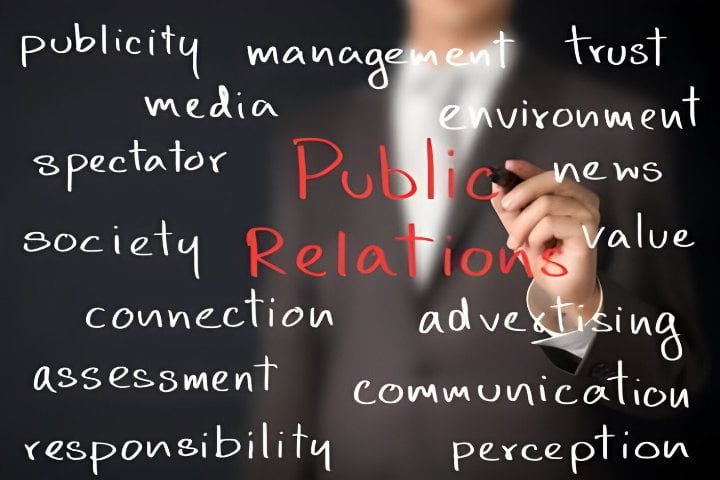Why is a PR strategy required?
In modern business, the significance of a well-crafted public relations (PR) strategy cannot be overstated. Amidst fierce market competition and rapidly changing consumer expectations, organizations increasingly lean on sophisticated PR strategies to carve out a distinct market position.
The essence of PR strategy is:
- To complement the overall business plan of an organization.
- To identify ways in which PR can help achieve an organization’s objectives.
- To focus on and manage all the communications of an organization.
- To ensure maximum benefit from all PR activities.
Let’s discuss each of them in detail:
Complementing the Business Plan
A PR strategy aligns closely with the business plan, bridging the company’s internal aspirations and the external world. It transforms business objectives into compelling narratives that resonate with stakeholders, enhancing the organization’s public image and reputation.
Patanjali Ayurved: Promoting Swadeshi

Patanjali Ayurved’s rise in the Indian FMCG sector is an excellent PR strategy rooted in nationalistic sentiment. By positioning itself as a swadeshi (indigenous) brand offering natural and Ayurvedic products, Patanjali tapped into the growing consumer preference for local and traditional goods.
The company’s founder, Baba Ramdev, effectively used his public image and media presence to advocate for the benefits of Ayurveda and the importance of buying Indian products, aligning the PR strategy with Patanjali’s business objective of capturing market share from multinational corporations.
This approach elevated the brand’s profile and cultivated a loyal customer base that identifies with its values and mission.
Identifying Opportunities
A well-defined PR strategy identifies how public relations can contribute to achieving an organization’s objectives. It helps pinpoint opportunities for engagement, awareness, and influence that might otherwise go unnoticed.
Flipkart: Big Billion Days

Flipkart has used its Big Billion Days sale event as a PR strategy to boost sales and enhance brand loyalty. By creating a buzz around exclusive deals and discounts during the event, Flipkart generates significant media coverage and creates a festive shopping atmosphere that attracts millions of customers.
This strategy aligns with Flipkart’s business objectives of driving sales, acquiring new customers, and retaining existing ones. The anticipation and excitement generated through PR efforts around the Big Billion Days have become a hallmark of Flipkart’s brand identity, reinforcing its position as a market leader in the Indian e-commerce space.
Managing Communications
Managing an organization’s communications effectively is paramount in day-to-day affairs especially during crises. A PR strategy ensures that all communications are coherent, consistent, and aligned with the organization’s values and goals, thus building trust and credibility.
Tata Group: 26/11 Mumbai Attack

Following the 26/11 Mumbai attacks in 2008, the Tata Group’s handling of the crisis at its Taj Mahal Palace hotel was exemplary. Tata reinforced its image as a pillar of strength and resilience through transparent communications, empathetic responses to the victims and their families, and a commitment to quickly rebuild the iconic hotel.
This PR strategy helped in crisis management and strengthened the Tata brand, reinforcing public trust and national pride, which are core to its business strategy.
Maximizing Benefits
A strategic approach is necessary to ensure that every PR activity delivers maximum benefit. This involves selecting the right channels, timing, and messages to achieve the desired impact and ensuring that resources are used efficiently to enhance the organization’s public standing.
Reliance Jio: Revolutionizing Indian Telecommunications

Reliance Jio’s launch in 2016 is a landmark example of a PR strategy seamlessly complementing business objectives. Jio’s entry strategy was to offer free data and voice services for an extended period of time. This bold move garnered unprecedented media attention and public interest, creating a massive surge in customer acquisition.
The PR narrative was built around democratizing digital connectivity and fostering digital inclusion for all Indians, aligning perfectly with its rapid market penetration business objective.
Basic Elements of PR Strategy
- Objective: What do you want to accomplish?
- Target: Who do you want to reach?
- Position: How do you wish to be perceived?
- Strategy: How do you want to inform your target audience?
- Action Plan: How do you accomplish your strategy?
- Evaluation & Forecast: How successful was the plan, and what lessons can be drawn for the future?
A PR strategy is grounded in six key elements that guide its development and implementation:
Objective
Clearly defined objectives are the cornerstone of any effective PR strategy. Whether enhancing brand recognition, managing a crisis, or supporting a product launch, objectives provide direction and purpose to PR efforts.
Target
Understanding the target audience is crucial. A PR strategy must identify who the organization wants to reach, including potential customers, partners, investors, and the general public, to tailor messages that resonate with their interests and needs.
Position
Defining the organization’s positioning entails determining how its target audience will perceive it. A strong position is authentic and compelling, differentiating the organization from its competitors.
Strategy
The strategy outlines how the organization plans to communicate with its target audience. It involves selecting the most effective channels and methods to convey the desired messages through media coverage, social media, events, or direct engagement.
Action Plan
The action plan is a detailed roadmap for implementing the strategy. It specifies the tasks to be accomplished, timelines, responsibilities, and resources required, ensuring that all PR activities are coordinated and aligned with the strategy.
Evaluation & Forecast
No PR strategy is complete without a mechanism for evaluation and forecasting. This involves assessing the success of the PR efforts against the objectives and learning from successes and failures to refine future strategies.
Optimizing PR Strategy for Enhanced Impact
To optimize a PR strategy effectively, organizations must integrate certain practices and considerations into their approach:
Integration with Digital Marketing
Integrating PR with digital marketing efforts is essential in the digital age. This ensures a unified online presence and leverages the strengths of both disciplines to amplify the organization’s message and reach.
Data-Driven Decision Making
Utilizing data analytics in PR strategy allows organizations to make informed decisions based on audience behavior, engagement levels, and campaign performance. This helps in fine-tuning strategies for better results.
Crisis Management Planning
A proactive PR strategy includes crisis management planning. Organizations can respond swiftly and effectively to mitigate negative impacts by anticipating potential issues and having a plan.
Continuous Monitoring and Adaptation
The media landscape and public sentiment are constantly changing. Monitoring these dynamics enables organizations to adapt their PR strategies in real-time, maintaining relevance and effectiveness.
Stakeholder Engagement
Engaging with stakeholders, including employees, customers, and partners, enriches the PR strategy. It fosters a sense of community and loyalty, turning stakeholders into advocates for the organization.
Conclusion
A well-structured PR strategy is indispensable for modern businesses aiming to thrive in a competitive and fast-paced environment. It enhances the organization’s public image and supports its strategic objectives, enabling growth and resilience.
Organizations can confidently navigate the complexities of public relations by concentrating on the fundamental components of PR strategy and incorporating optimization practices, ensuring that their target audiences hear, understand, and embrace their messages.
In the realm of business strategy, PR no longer plays a secondary role; it is central to achieving lasting success and building a strong, positive relationship with the public.




